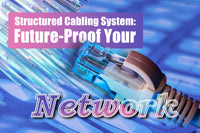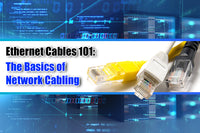Contents
Seamless network connectivity plays a vital role in people’s modern life. Choosing the right network connectivity is especially crucial for data centers. Among various connectivity types, cross-connect has become a practical and scalable solution to connect hardware assets, handle vast data exchanges, and enhance network security. This blog explores its definition, types, and benefits, guiding businesses that rely on stable and reliable network connectivity.
What is Cross Connect?
With the increasing demand of high-speed internet, data centers have been more and more important. A cross connect is an essential part in data centers, aiming to create a fast and direct link between two individual termination points in a network data center. For example, it can be physical connection between your colocation rack and your service provider, using a number of patch cables during the cross connect. This dedicated connection can be customized, allowing you to manage different data pathways according to your specific networking needs. By creating a private patching area, you don’t need to worry about the security risks of the public network any longer.
There are many types of cables used in cross connects, such as single-mode fibers, multi-mode fibers, Cat5/Cat6 Ethernet cables, and other cables.
Three-connector vs. Four-connector Cross Connect
There are many types of cross connects, but the most common are three-connect and four-connect connections. You can check the differences in the following picture.

Three-connector cross connect is typically used between the network cabinet and the server cabinet. It requires an extra patch panel to replicate the interfaces of the network device (switch) in the network cabinet. But four-connector cross connect requires another cabinet for the cross connection. There are two patch panels in this cabinet: one is used to replicate the interfaces of the panel in the server cabinet, and the other one is used to replicate the interfaces of the panel in the network cabinet. It is suitable for a complex network system, so if you run a large-scale business, four-connect cross connect is a better option.
5 Benefits of Cross Connect
Establishing the network through cross connects can benefit a lot. They are capable of handling vast data exchange at fast speeds and also provide a cost-effective and secure solution for optimizing the network infrastructure. Here are 5 benefits of using cross-connects.
Network Performance
Many businesses or organizations largely rely on low-latency network connectivity to ensure real-time applications. Poor network performance can increase the time it takes to transfer data from one end to another end and back again. Cross connects create physical links between endpoints, ensuring fast data transmission with low latency. They are also less susceptible to bandwidth congestion on the public network.
Security
The cross connect reduces the data loss and it allows businesses to recover data. Cross connect provides a private network, so no sensitive and valuable data will be transferred to the public network. It offers a secure network transmission, reducing the possibility of malicious interceptions.
Reliability
Cross connect simplifies the network infrastructure by directly linking two locations, which increases the reliability of network connection. Cross connections cannot only provide high speeds but also minimize the number of network points to reduce the potential for network failure and server downtime.
Cost Reduction
Cross connect is a more cost-effective alternative to regular telecom network services. It provides higher bandwidth at a reasonable cost. They also eliminate the need to pay extra for hardware because it is already included in the price. The cross connection also reduces the cost of the internet as customers can directly connect to different service providers.
Flexibility
Using cross-connects can increase flexibility and scalability. The patch cables on the patch panels can be adjusted at any time to accommodate network traffic needs and service requirements. This allows for easy updates to data center expansion and adjustment.

How to Test Cross Connects?
Permanent link test is generally used to test if the fixed part in the link can work well. But it can not offer an accurate test of the total link loss. So, how to effectively test data center links? To test data center links mixed with cross-connect and interconnect, you should use the cross-connect test. More specifically, you can test the interconnect panels at active equipment, starting from the near to far active equipment.
Cross Connect vs. Interconnect
Both cross-connect and interconnect are connectivity methods in the data center. While they serve similar purposes, they have some differences.
- Cross-connects establish direct and short links between two separate ends (patch panels), with physical patch cables and jumpers It actually refers to the connection where the equipment panel is added to copy the switch’s ports and then is connected to the distribution panel. It provides a dedicated channel for controlling the patching zone, making it more secure to manage and maintain.
- Interconnects enable long-distance communication between a carrier’s network and its customer facilities or between more networks or carriers. But the main purpose of an interconnection is to create the connection between an active equipment and the distribution panel. It doesn’t require more panels than a cross connect. The permanent copper trunk cabling is responsible for the interconnection between two ends of the panels. However, it provides direct and public access to the patching zone, making it less secure than cross connect.
Summary
Cross connects have become a critical path to network connectivity in the data center. They are effective solutions to stable and reliable private network transmission. But if handled improperly, they can present some potential challenges such as congestion, data loss, and network failure. A well-designed cross connection benefits businesses that require a high-performance network.
For more information on this topic, you can keep up on our blogs. While VCELINK offers general and basic information for our customers and other visitors to the website, it’s not professional advice.



Be the first one to comment.
Leave a comment